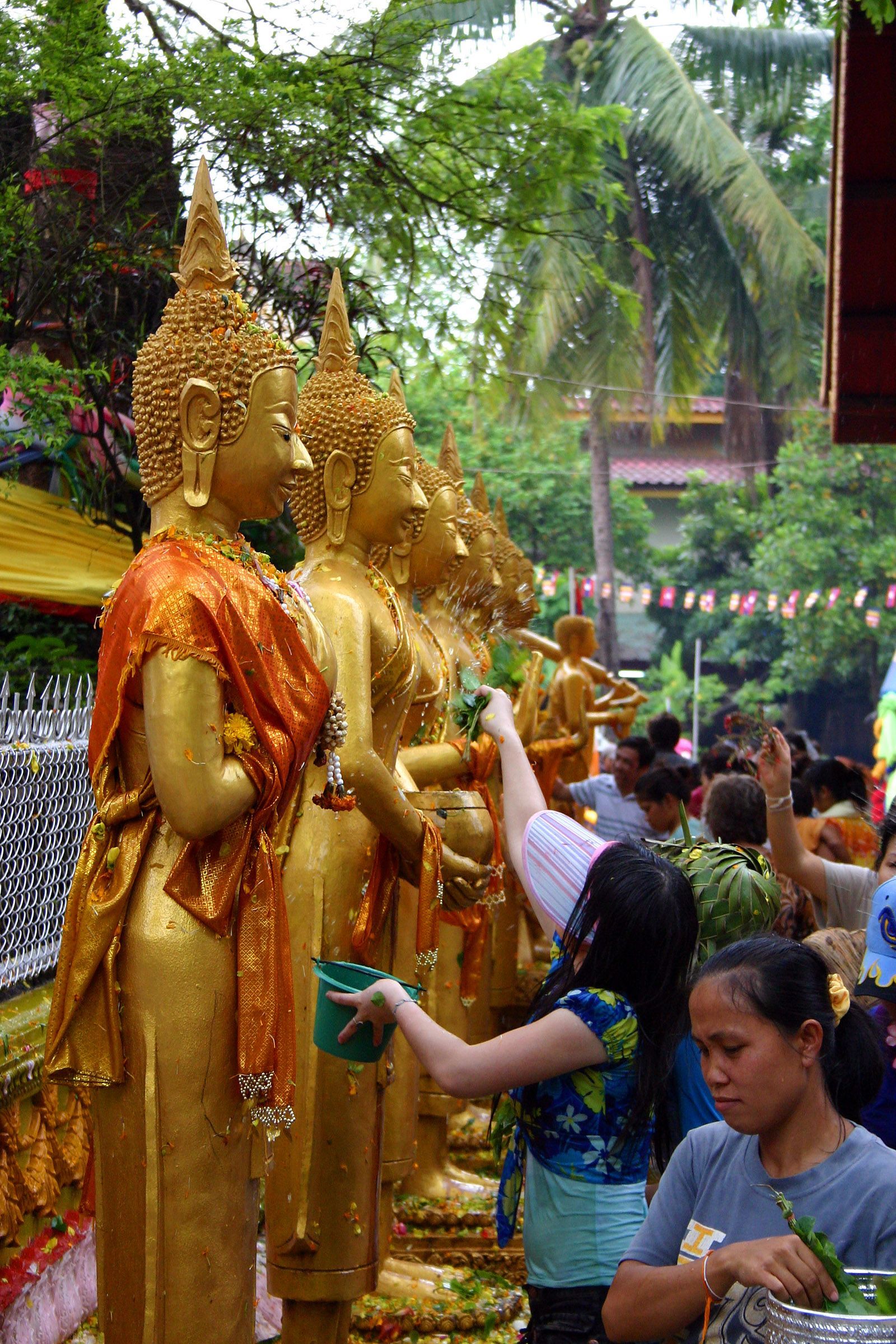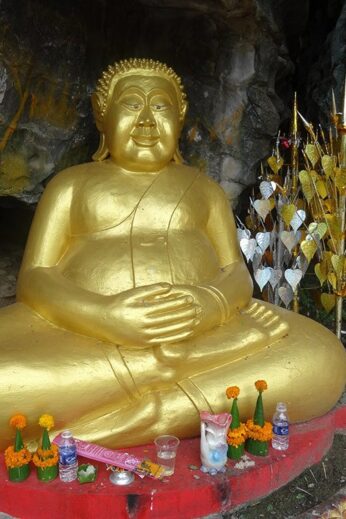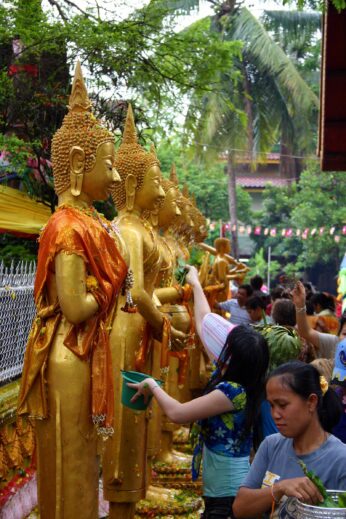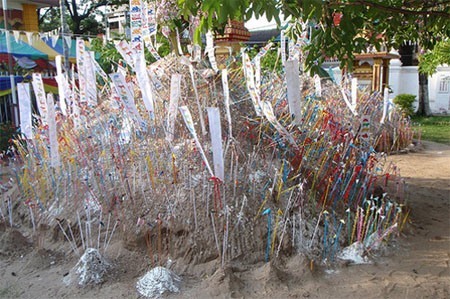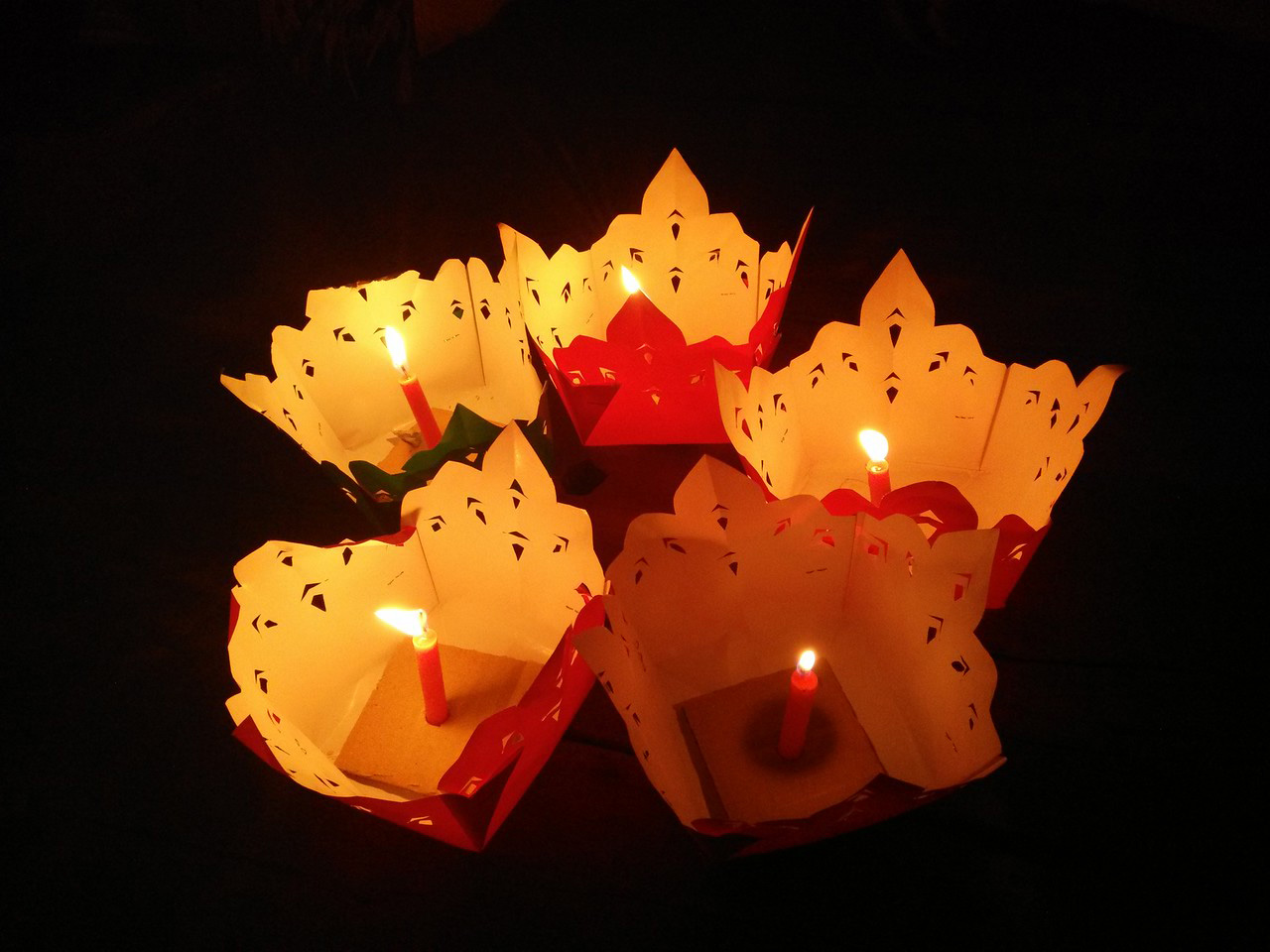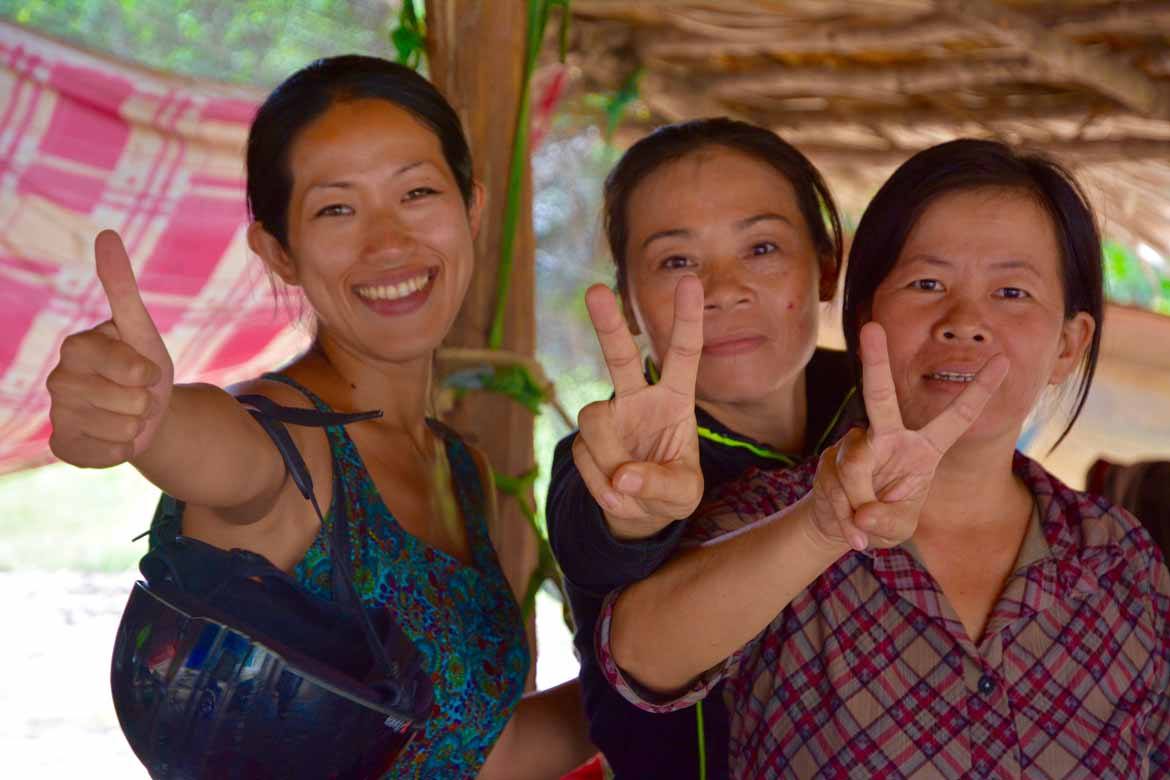This month, starting on the 15th of April, we’ll be ringing in the New Year once again in Burma, Cambodia and Laos.
In countries where Theravada Buddhism forms the majority, New Year celebrations are calculated according to a lunisolar calendar, which means that they fall in approximately mid-April every year. Though customs differ from country to country, all are united by the performance of traditional music and dance, parades, the paying of homage at temples, the doing of good deeds to accrue merit – and, most importantly, the throwing of lots and lots of water! – Great fun!
What’s in a name?
Though they take place concurrently, New Year celebrations have a different name in each country. In Burma it’s Thingyan, in Cambodia it’s the unpronounceable Chaul Chnam Thmey, in Thailand it’s Songkran and in Laos it’s known as Pi Mai.
The name “Songkran” can be used as an umbrella term for all of these festivities. Originally derived from the Sanskrit word sankrati, it refers to the transition of the sun into Aries, the first astrological sign in the Zodiac.
Dates
Both Lao and Khmer New Year are celebrated over a three-day period (April 14-16 2015), although in reality the festivities usually continue over a rather longer period.
It is actually year 2559 in the Khmer calendar this year. In Cambodia, the first day of the celebrations (Maha Songkran) is when Cambodians head to the temple to offer food the monks and receive blessings, spring-clean and decorate their homes, and prepare New Year food and drinks. The second day (Virak Wanabat) is when people make contributions to charity, give gifts to parents and elders, pay homage to their ancestors and construct sand stupas (more on this later. The final day (Virak Leung Sak) is the day of cleansing rituals and water-throwing.
In Laos, meanwhile, the first day of the festival is considered to be the last day of the old year, and is a day for making festival preparations and washing Buddha statues. The second day is a neutral day, belonging to neither the old year nor the new, when legend has it that the Lao do not age. This is the time when the Lao thoroughly clean their houses, and the water-throwing begins. The third day of the festival is the first day of the new year proper, when Lao families gather at home and give gifts to their elders before heading to the temple in the evening for a candlelit procession.
Water
In all Theravada Buddhist countries, water plays an important symbolic role in New Year festivities and is used to wash away the sins of the previous year in preparation for the new. At this time of year, people respectfully pour water on their elders, monks, and images of the Buddha – as well as using water to wash their homes.
Over the years, this subdued tradition has grown into what is essentially a giant, multi-country water fight, with anybody and everybody fair game for a soaking. Do not expect to be let off the hook because you’re a foreigner! For obvious reasons, leaving your camera at home is highly advisable during New Year celebrations in either Laos or Cambodia.
Laos and Cambodia are both at their hottest in April, with the mercury frequently soaring into the high thirties (Celsius), so you’ll probably find that getting buckets and buckets of water thrown over you is actually a rather appealing idea – but watch out! Some sneaky people like to fill their buckets with ice, so you may get a little more of a shock than you bargained for. Look out for people throwing flour and shaving cream too.
Merit-making
As well as the washing away of sins, New Year is a time for Lao and Cambodians to store up merit – a Buddhist concept which is thought to accumulate as a result of good deeds and translate into good karma throughout one’s life and into subsequent lives. Merit can be earned through making offerings, giving alms and food to monks, honouring one’s elders and through a variety of other New Year traditions.
Building sand stupas
In both Cambodia and Laos, a popular New Year tradition is the building of stupas or mounds out of sand. These can be built within the temple grounds, on the beach or on the shores of a river, and decorated with incense, candles, flour, flags, leaves, flowers and banners bearing animal images. The castles are built as offerings to Buddha, and it’s thought that this tradition earns merit for the builder.
Setting animals free
In Laos, another popular New Year merit-making activity is the setting free of small animals into the wild. Amongst street food, candles, musical instruments, balloons, sweets and other typical festival fare for sale in the streets you’ll find caged birds, frogs, turtles, fish and more – all ready to be bought and released into the wild in order to accrue merit for the buyer.
Traditional games
In Cambodia particularly, New Year is a time to play games, and you’ll see many groups of friends and families (both adults and children) outside engaging in traditional Khmer fun.
Where can you join in the festivities?
New Year is celebrated throughout the country in both Laos and Burma, and you will come across festivities wherever you go. Larger cities are probably the best fun, as the streets are turned into a giant water-fight and there is plenty going on that you can join in with! Luang Prabang in particular hosts many impressive parades and celebrations over the course of the festive season.
